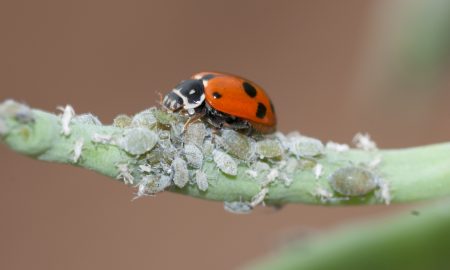Mass egg hatchings of the redlegged earth mite are expected with the onset of cooler conditions and some rainfall in May.
Redlegged earth mite biology
Redlegged earth mite (Halotyudeus destructor, RLEM) activity is highly tuned to environmental conditions.
This pest survives between winter-cropping seasons as over-summering eggs, which will only hatch under specific conditions in autumn.
According to Dr. Garry McDonald (cesar and University of Melbourne), the process of egg development in autumn requires at least 5 mm of rain accumulated over five consecutive days or less, followed by 10 days of average daily temperatures remaining below 16°C.
Conveniently for the RLEM, this coincides with the establishment of their host crops.
Egg hatch predictions
A warm, dry April has largely delayed the hatching of RLEM across south eastern-Australia this year.
But with cooler conditions and some rain finally arriving, peak egg hatchings are imminent.
The relationship between moisture and temperature requirements for RLEM hatchings has been modelled to provide guidance on egg hatch trends. We’ve used this prediction model to estimate the date of peak egg hatch in Ballarat, Hamilton, and Hopetoun in Victoria, and Wagga Wagga and Albury in southern NSW.
Rainfall and the drop in daily temperatures in early May fulfilled the requirements for all of these locations, with peak egg hatch expected to have occurred on the 14th of May.
Damaging infestations will become apparent about 7-14 days from this date, so the time to monitor emerging seedlings crops for RLEM is just around the corner!
Resistance risks
Insecticide resistance in the RLEM is now present in the southern cropping region, so chemical stewardship is of utmost importance.
That means not using the same chemical groups across successive spray windows (on multiple generations of mites) and reserving co-formulations (or chemical mixtures) for situations where damaging levels of pests are present, and a single active ingredient is unlikely to provide adequate control.
For more information visit the redlegged earth mite PestNote.
Cover image: Photo by Andrew Weeks, Cesar Australia





